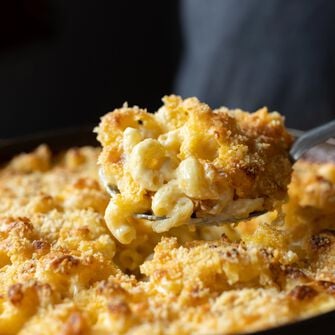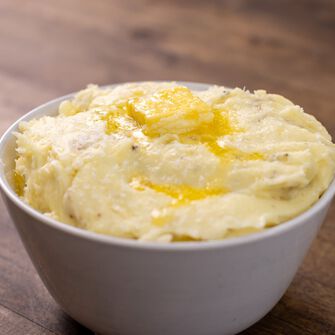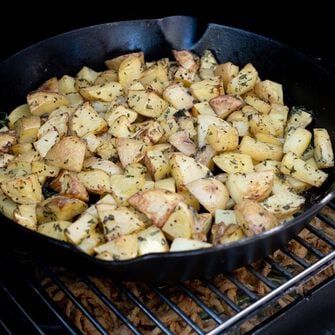
Beef Wellington

prep
1-2 Hr

cook
45 Min

feeds
4-6
Beef Wellington is a classic dish that is perfect for a special occasion. In this version you can infuse it with a touch of smoky flavor by using a pellet grill. The combination of flavors pair perfectly with the rich, savory filling.
What is beef wellington
Beef wellington is a beef tenderloin (fillet mignon) wrapped in a diced mushroom mixture, prosciutto, and finally a puff pastry. The beef tenderloin is arguably the most tender meat on the entire cow which makes for an incredible dish when pared with a slight crunch from the puff pastry and accompanying flavors from the mushrooms and prosciutto.
How long to cook beef wellington
From searing the tender loin to baking in the oven the total time to cook a beef wellington is about 45 minutes. This will vary on the size of beef fillet you have. It is best to cook to temperature rather than time so keep an eye on the internal temperature of the fillet.
How to make beef wellington
to cook a beef wellington you want to start by searing the fillet/tenderloin. This should only take a minute or two. Next step will be making the mushrooms. You will fry them in a hot pan with your aromatics. When you are done it should be almost a paste. You will then work on the puff pastry which we recommend buying from the store pre made. Finally you will start the layering and wrapping. Lay out a blanket of prosciutto followed by your mushroom mixture. Next will be the beef tenderloin and finished off by wrapping everything together so that you no longer see the meat. Place the master peace in an oven or pellet grill at 400°F for about 30 minutes. Once your internal temperature hits 125°F you are done!
Ingredients
1 pound beef fillet
Olive oil, for frying
15 mushrooms
1 sheet of puffed pastry
Prosciutto
2 eggs
1 tablespoon milk
Sea salt
Freshly ground black pepper
Instructions
Beef Wellington
Step 1
Start by rolling your beef fillet in plastic wrap to set their shape. Pop it in the fridge to chill for 30 minutes.
Step 2
Heat up some olive oil in a pan and sear the beef fillet for 30-60 seconds on each side until they are browned and rare in the middle. Let the beef cool down and take a breather.

Step 3
Finely chop the mushrooms and fry them in a hot pan with thyme leaves, olive oil, and some seasoning. Cook over a high heat until all the moisture has evaporated and you have a mushroom paste, also known as a duxelle. Let the duxelle cool down and relax.

Step 4
Roll out the pastry on a floured surface until it is big enough to wrap around the beef fillet like a little pastry blanket. Chill the rolled out pastry in the fridge.

Step 5
Lay out a sheet of plastic wrap and place 4 slices of prosciutto on top, slightly overlapping, to create a square. Spread the duxelle evenly over the prosciutto like a mushroomy blanket.

step 6
Season the beef fillet and place it on top of the mushroom-covered ham. Roll the prosciutto around the beef and tie it with the plastic wrap to create an evenly thick log. Chill for at least 30 minutes to let everything firm up.

STEP 7
Brush the pastry with some egg wash to give it a nice golden color. Remove the plastic wrap from the beef and wrap the pastry around the prosciutto-wrapped fillet. Trim the pastry and brush it all over with more egg wash. Cover with plastic wrap and chill for at least 30 minutes.

STEP 8
When you're ready to cook the beef wellington, preheat the oven to 400°F. Score the pastry lightly and brush with more egg wash. Bake for 20-30 minutes until the pastry is golden brown and cooked and the internal temperature is 125°F.

STEP 9
Let the beef wellington rest for 10 minutes before carving and serving. Enjoy your fancy and delicious beef wellington!

Chef's Notes
Use the back of the knife when scoring the pastry. This will prevent cutting into the pastry and having it split while cooking.





